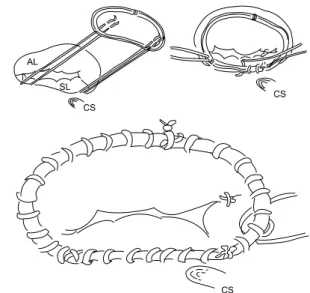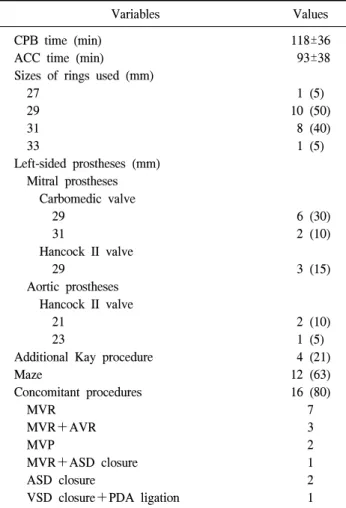http://dx.doi.org/10.5090/kjtcs.2012.45.1.19 ISSN: 2233-601X (Print) ISSN: 2093-6516 (Online)
Department of Thoracic and Cardiovascular Surgery, Dong-A University Medical Center, Dong-A University College of Medicine
†This article was presented at the 42nd Autumn Scientific Meeting of The Korean Society for Thoracic and Cardiovascular Surgery.
Received: March 8, 2011, Revised: October 22, 2011, Accepted: November 11, 2011
Corresponding author: Jong Soo Woo, Department of Thoracic and Cardiovascular Surgery, Dong-A University Medical Center, Dong-A University College of Medicine, 1 Dongdaesin-dong 3(sam)-ga, Seo-gu, Busan 602-715, Korea
(Tel) 82-51-240-5195 (Fax) 82-51-231-5195 (E-mail) jswoo@dau.ac.kr
C
The Korean Society for Thoracic and Cardiovascular Surgery. 2012. All right reserved.
CC


